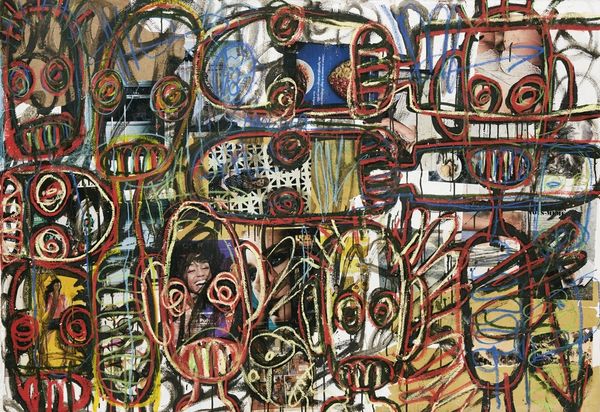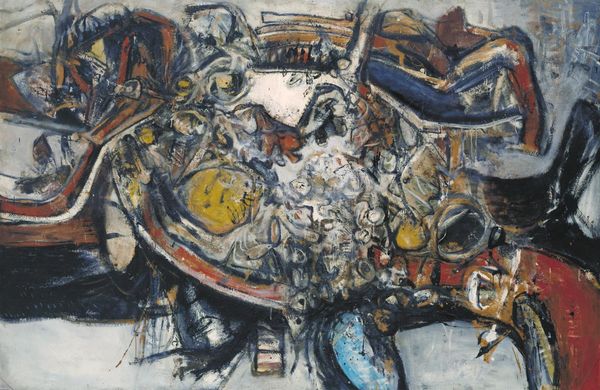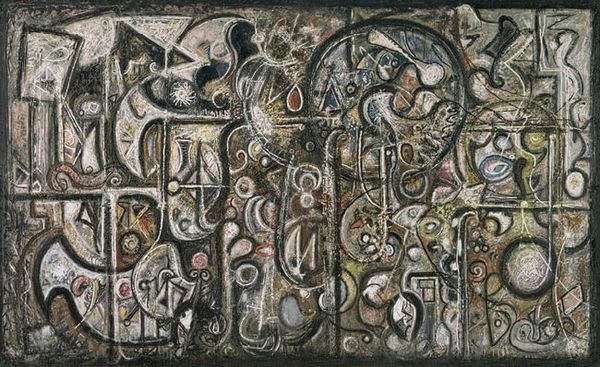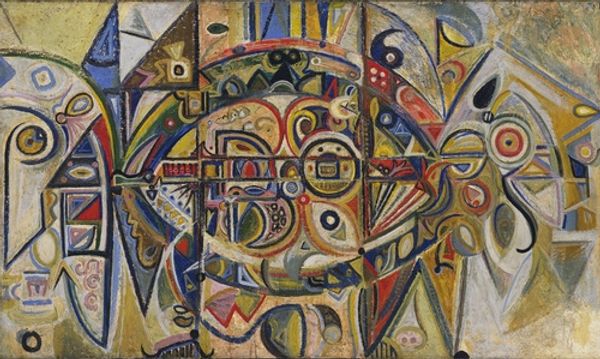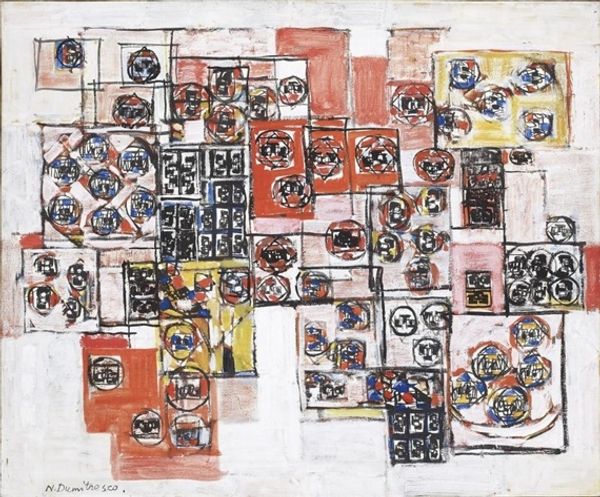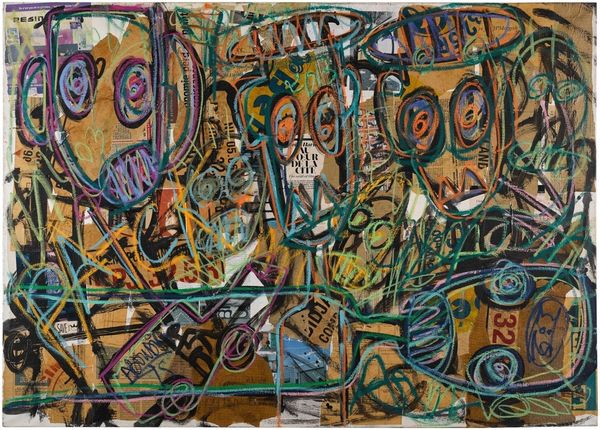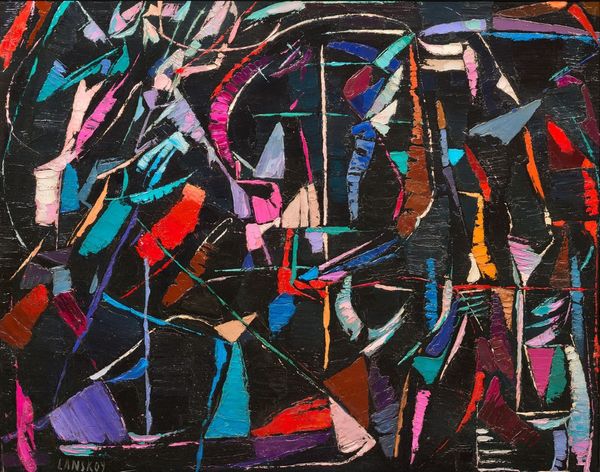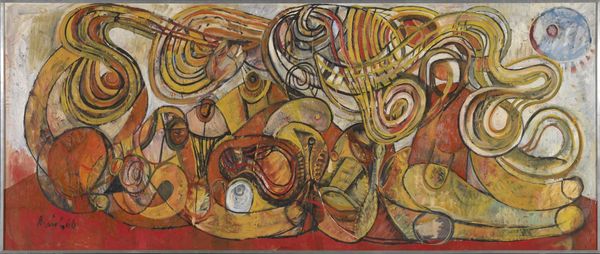
mixed-media, matter-painting, acrylic-paint
#
abstract-expressionism
#
abstract expressionism
#
mixed-media
#
matter-painting
#
acrylic-paint
#
form
#
abstraction
#
line
Copyright: Richard Pousette-Dart,Fair Use
Curator: Let's turn our attention now to Richard Pousette-Dart's "Fugue Number 2," crafted in 1943. It is a piece where matter painting and acrylic interplay to present a complex arrangement of form and line. What strikes you initially about it? Editor: Well, immediately, it feels like peering into some sort of cosmic engine, all swirling parts and hidden mechanisms, if engines dreamt. The textured surface just buzzes with energy, almost restless, as if something's perpetually in motion just beneath the visible chaos. Curator: Indeed, the visual dynamics are pronounced. Observe how Pousette-Dart utilizes overlapping forms and contrasting tones to disrupt conventional figure-ground relationships, achieving a destabilized visual field. We see a semiotic exploration of symbols floating within a spatial ambiguity. Editor: Yeah, those little symbols do feel like clues left for… who knows what. To me, it is a jazz composition somehow got painted instead of played. Free-flowing and structured all at once. There are certain recurring shapes that do pull your focus around the whole thing, keeping it together as a single unit. Curator: Precisely. The circular motifs you noted, repeated and varied throughout, perform a structuring role despite the painting's overall non-representational quality. This repetition echoes musical form, aptly capturing the "fugue" referenced in the title. We can view it through a structuralist lens, perceiving a language of abstract signs. Editor: Ah, structuralist! My brain's going fuzzy just hearing that. I will take your word for it. For me, it evokes that period of early abstraction so obsessed with spirituality and symbolism. But maybe "spirituality" is really just an emotion trying to escape a form it hasn't quite invented yet. It just feels full of unrealized possibilities. Curator: A valid intuitive observation. We might then see Pousette-Dart's work as emblematic of the period's search for new expressive languages following the devastations of the early 20th century and with the rise of expressionism as a result of historical tensions. Editor: It makes you wonder where he was aiming to go with this stuff. You have to think every artist starts off with this pure burning flame. Something they have to wrestle out and onto the canvas, and then it shifts from one wrestling match to the next, that is the thing I most wonder about. Curator: His stylistic exploration does invite continued interpretation, particularly regarding how non-representational forms might yet articulate cultural anxieties of that era.
Comments
No comments
Be the first to comment and join the conversation on the ultimate creative platform.

